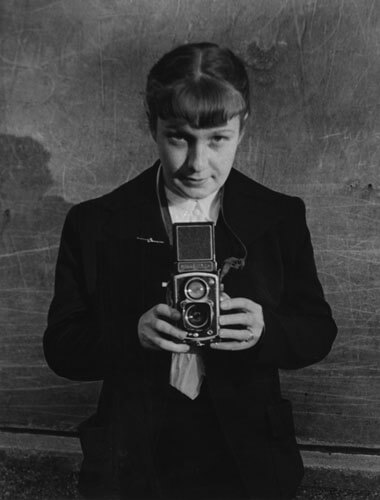Sabine Weiss was born in Switzerland in 1924. In 1942, she wonders what she will do with her life, and decides that she should become a photographer because it is what she loves to do. She is the daughter of a mother who showed her art galleries and Roman churches at a very young age, and of a researcher chemist father who loved to see her print her little photos with the resources available at the time.
From 1942 until 1945 she was an apprentice at Boissonnas in Geneva, house of a dynasty of photographers that celebrated its 80th birthday.
In 1945 Sabine Weiss moved to a studio in Geneva, but in 1946 she decided to leave the city of her childhood to live in Paris. She knew there was no turning back. She asked Willy Maywald to become her assistant. In 1949, she met the painter Hugh Weiss and realized right away that she would spend her life with him. Sabine Weiss left Maywald, where she mastered her craft and started a long career, experimenting fashion, photojournalism, advertising and everything else she was asked to do.
During her free time, she liked to immortalize the depths of man in all simplicity. Her photographs moved Edward Steichen when preparing his major exhibition "The Family of Man" therefore he decided to present three of her images.
In recent years, Sabine Weiss has dedicated her time to exhibitions that showcase the humanist side of her work because it meant a lot to her.
Key dates
1924 July 23rd Birth at Gingolph in Switzerland, Naturalized French in 1995.
1942-45 Apprentice at Boissonas in Geneva
1945 Swiss diploma of photography
1946 Settles permanently in Paris
1946-50 Assistant of Willy Maywald
1950 Weds the American artist Hugh Weiss
1951 Works for several advertising agencies
1952-61 Contract with Vogue Magazine (Fashion and Assignments)
1952 Enters the Agency Rapho
1952 Free-lance for major magazines in the USA and in Europe like Paris Match, Life, Time, Newsweek, Town And Country, Fortune, Holiday, European Travel And Life, Esquire... covering countries in Europe, Africa, North America and Asia.
Most recent exhibitions:
2014 Vannes, Festival de la Photo de Mer "Portugal, 1954"
2014 Zürich, Photobastei, Rétrospective
2014 Genève, Galerie Patrick Cramer, Portraits d’artistes (Giacometti et Miro)
2014 Salon de la Photo, Paris, Porte de Versailles, rétrospective « Chère Sabine » (Tribute to the photographer's 90th birthday)
Decorations
1987 Chevalier des Arts et des Lettres (Knight of Arts and Letters)
1999 Officier des Arts et des Lettres (Officer of the Ordre des Arts et des Lettres)
2010 Ordre national du Mérite (French National Order of Merit)
Discover Sabine Weiss' Interview